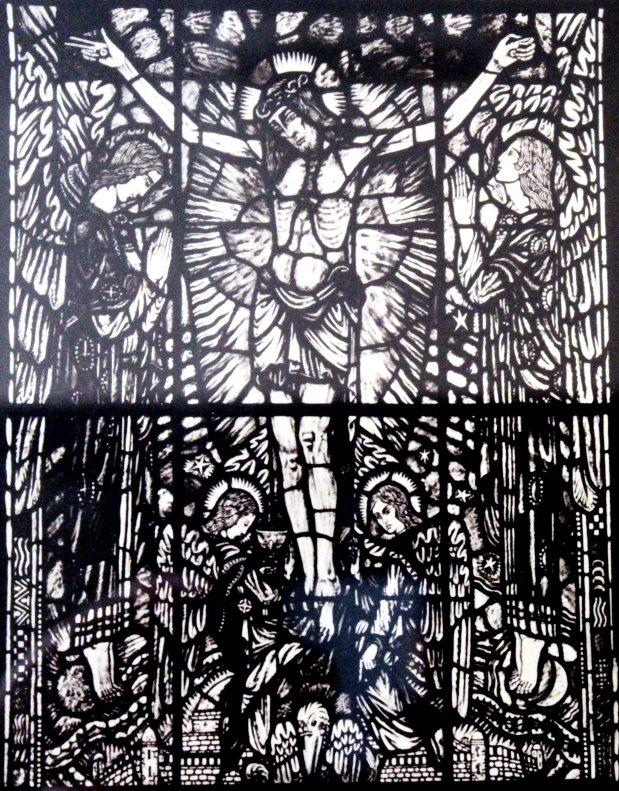Apse WindowShown above is a video of the stained glass window in the apse of St Andrew’s church. Shown below is a photograph of the same stained glass window. If you click on any area of the stained glass in the photograph below, that part of the window will be displayed in greater detail. Reproduced at the bottom of this page is David Reid’s full description of this stained glass window, as based on the notes produced by the designer of the window Walter J. R. Cook. On Sunday the 18th Nov. 1934 His Royal Highness The Duke of York unveiled the stained-glass window in the apse. This window is Scotland’s tribute to the memory of Field-Marshal The Earl Haig. It was designed and executed by Mr. Walter J. R. Cook, Edinburgh. The Subject of this Window is that of the Supreme Sacrifice of our Soldiers as symbolised by the Crucifixion of Christ which occupies the centre part of the Window. On either side of His Cross hover adoring angels with the sun and the moon at their feet symbolising the light and the darkness which descended on the earth. Behind all, the rainbow of Hope is seen, Above the Christ descends the Holy Spirit in the form of a dove. Behind flow the Waters of Life. On either side a small angel holds the Martyr’s Crown and the Crown of Thorns. At the feet of Christ two angels are seen holding the symbols of the Communion, the Bread and Wine. In the sky which has opened appears the vision of the Holy City. At the Base of the Cross the Mother mourns her Son, while a second woman prays and a Disciple, setting out to carry on the work of Christ, endeavours to comfort both. This group represents the Country mourning her dead but preparing to carry through the cause for which the men died that their death should not he in vain. Above these figures is the symbol of Woman’s sacrifice, the Pelican feeding her young with her own blood. At the base of the Window, surrounded by the names of his most famous Battles, are the Arms of Earl Haig with Crown, Helm, Crest and Supporters. Underneath is the Order of the Thistle, Springing from behind the Scroll of Battle Names is the Tree of Life, which encircles in the centre of the Window a mourning Scottish Soldier kneeling on the Poppy-covered Grave of a comrade. Outside is represented the Scottish Thistle and the Flanders Poppy. On the left, encircled by the foliage of the Tree of Life and surmounted by the Lion of Scotland, are four quatrefoils depicting from the base up (I) The Engineers repairing a bridge over a river; (2) The Infantry preparing to charge the Enemy Lines; (3) The War as fought in the Air; (4) The British Tanks advancing across No Man’s Land, on a shattered German Trench. On the right, in the same order and surmounted by a Shield bearing the Cross of Saint Andrew, we have (1) The Medical Staff represented by a Base Hospital; (2) A Cavalry Skirmish; (3) The men who manned the Troopships on the Channel during the Submarine peril. The Bridge of a Commandeered Tramp Steamer is seen; (4) The Artillery, a camouflaged Big Gun in action.  Shown above is a photograph of part of the original plan of the stained glass window as drawn by Walter Cook. Next: the Window above the Main Door |


